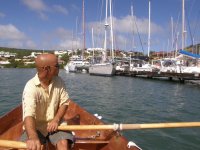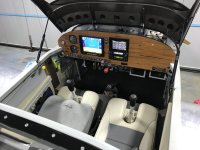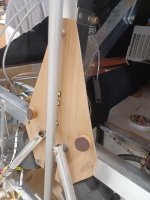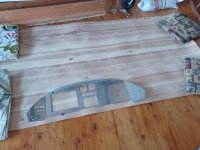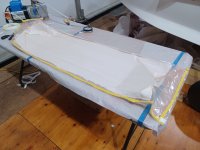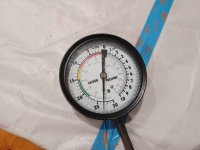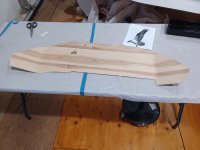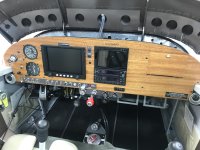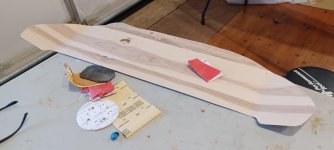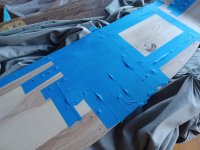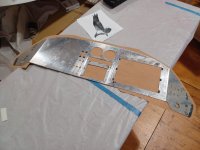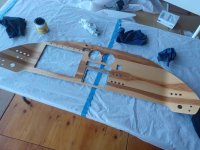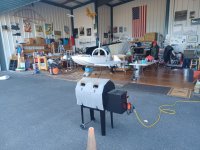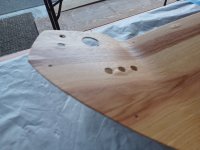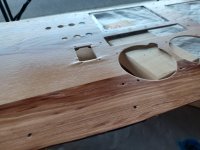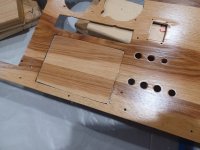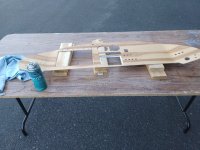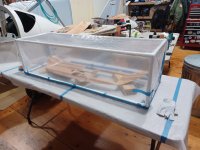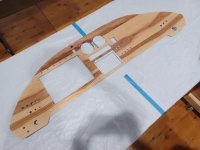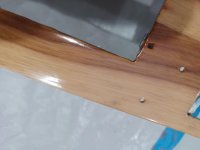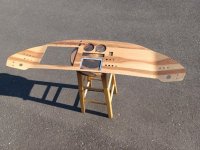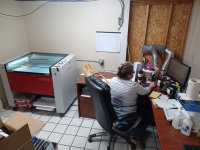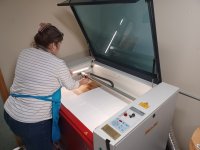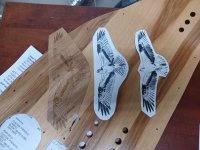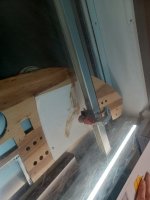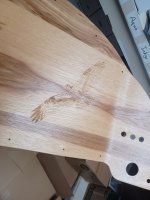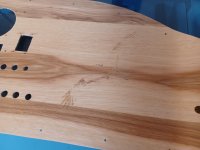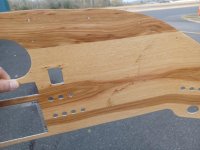Being a veneer woodworker and cedar-strip canoe builder, working with veneers is really straightforward and guaranteed to produce a satisfying final product. The keys are as follows:
1. Start with a good quality veneer (see
http://www.rockler.com/product.cfm?page=2215)
2. Get a good glue, either contact cement or
Titebond Cold Press for veneer
http://www.rockler.com/product.cfm?page=2220
3. Either a stain (your choice) or not. I prefer to not stain because the wood will darken over time from UV exposure. Stained wood will just be that much darker.
4. A good clear coat protectant. Preferably lacquer. Almost any other clear coat will yellow over time. The clear coat MUST be sprayed with at least four light coats with sanding between the coats. (Spray two coats before sanding).
5. The panel must have ALL holes and switch cut-outs already cut out. Clean the panel well to remove any grease, oils, etc. (Remove any switches or instruments first (duh). Lay the clean aluminum panel on a flat surface.
6. Lay out the veneer (dry) onto the panel and orient. Use a single sheet of veneer if possible. Avoid having to book match any edges. Allow for at least .25" overlay on the panel edges. You can trim excess with scissors. 7. Remove the panel.
8. LIGHTLY dampen the veneer with water using a sponge until the veneer is completely wetted (DO NOT thoroughly soak!). Lay a flat board or sheet of plywood over the veneer and allow to dry (2-3 hours) Add weights to the plywood to really press the veneer down tightly or you will get bubbling of the veneer. Wetting will raise the grain and pre-shrink the veneer. It will also help the veneer flatten out.
9. Lay out the panel on butcher paper on a flat surface. Use a roller and apply the Titebond over the entire surface of the panel. Repeat to the BACK of the veneer. Place the veneer on to the panel and roll the veneer (using a clean roller) from the inside outward toward the panel edges (removes any bubbles and assures a good bond. Cover veneered panel with butcher paper and plywood. Weigh down and allow to dry at least 24 hours.
10. Remove weights and plywood, flip panel over and use a sharp exacto knife to trim around instrument holes and switches. Edges can be cleaned up with a dremel tool and sandpaper.
11. Flip panel over. With veneer side up, lightly sand with 320-400 grit paper to remove any raised grain. Blow away any sawdust. Lightly wipe with a damp sponge to thoroughly remove residual sawdust. (Surface must be absolutely clean before next step.)
12. Spray first (light) coat of lacquer. Allow to dry at least 15-20 minutes. Apply labels (Depending on veneer color you would use white lettering on a dark veneer or black lettering on a light veneer. Labels should be printed on clear background.)
13. Apply second coat. Lacquer should be dry enough to sand (320 grit) within 30-60 minutes depending on humidity. (BTW, humidity should be below 70%). Repeat until you have desired look (4-8 coats). REMEMBER, multiple layers of thinner coats will be better than 2-3 heavy coats. Sanding must be followed with a damp wipe to remove any contaminants. Sand lightly to rough up the surface for good adhesion of successive coats.
https://vansairforce.net/community/showpost.php?p=46511&postcount=13





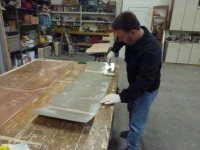
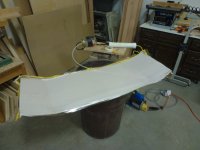
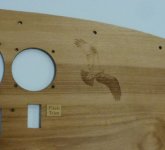

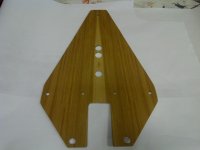
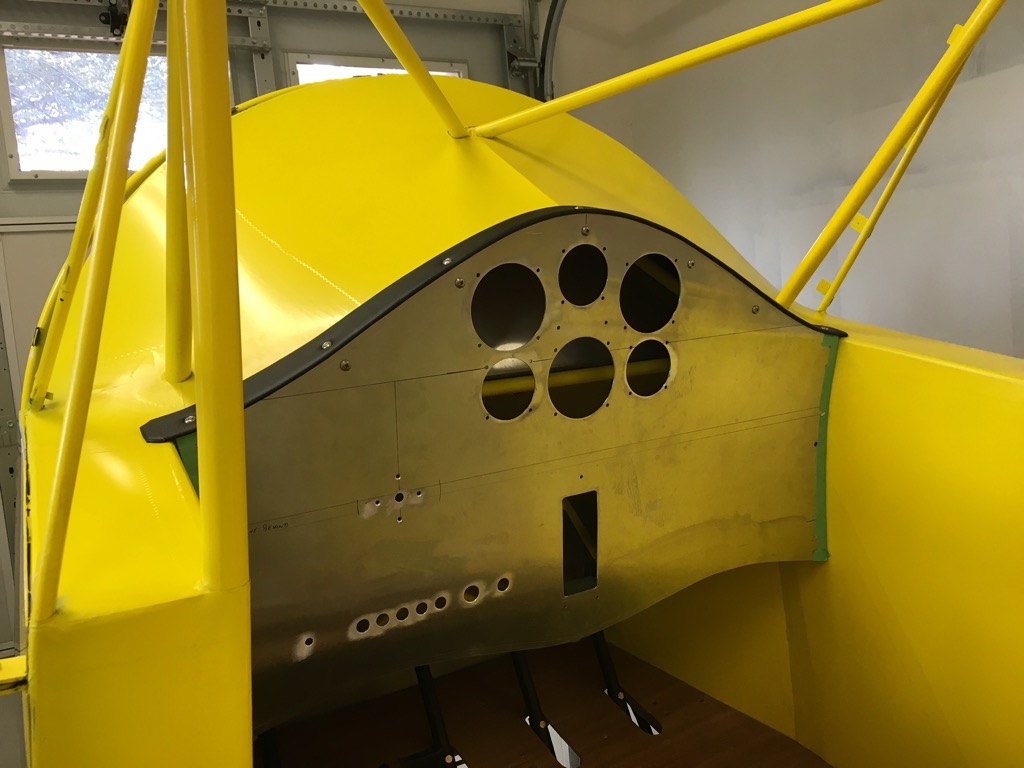
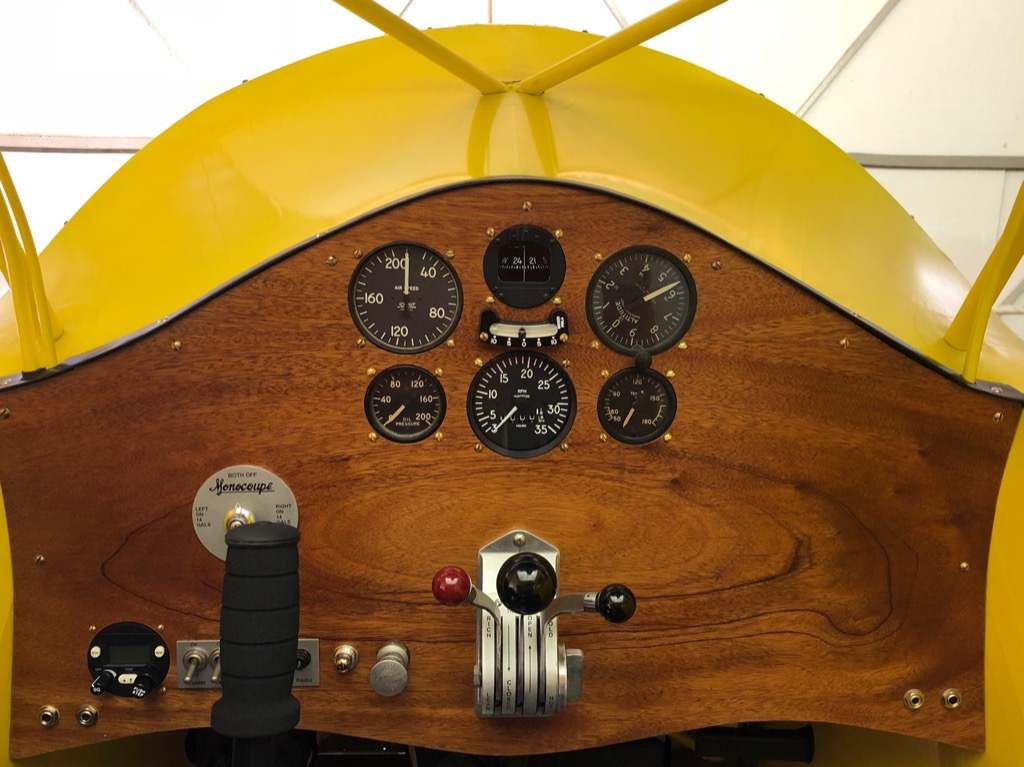
![IMG_1282[1].jpg](/data/attachments/14/14945-d19c904a48f8fbdf371bf0478e2ba68b.jpg)
![IMG_1283[1].jpg](/data/attachments/14/14946-d7ed43817178ae5d3dfe9e835b56ce82.jpg)
